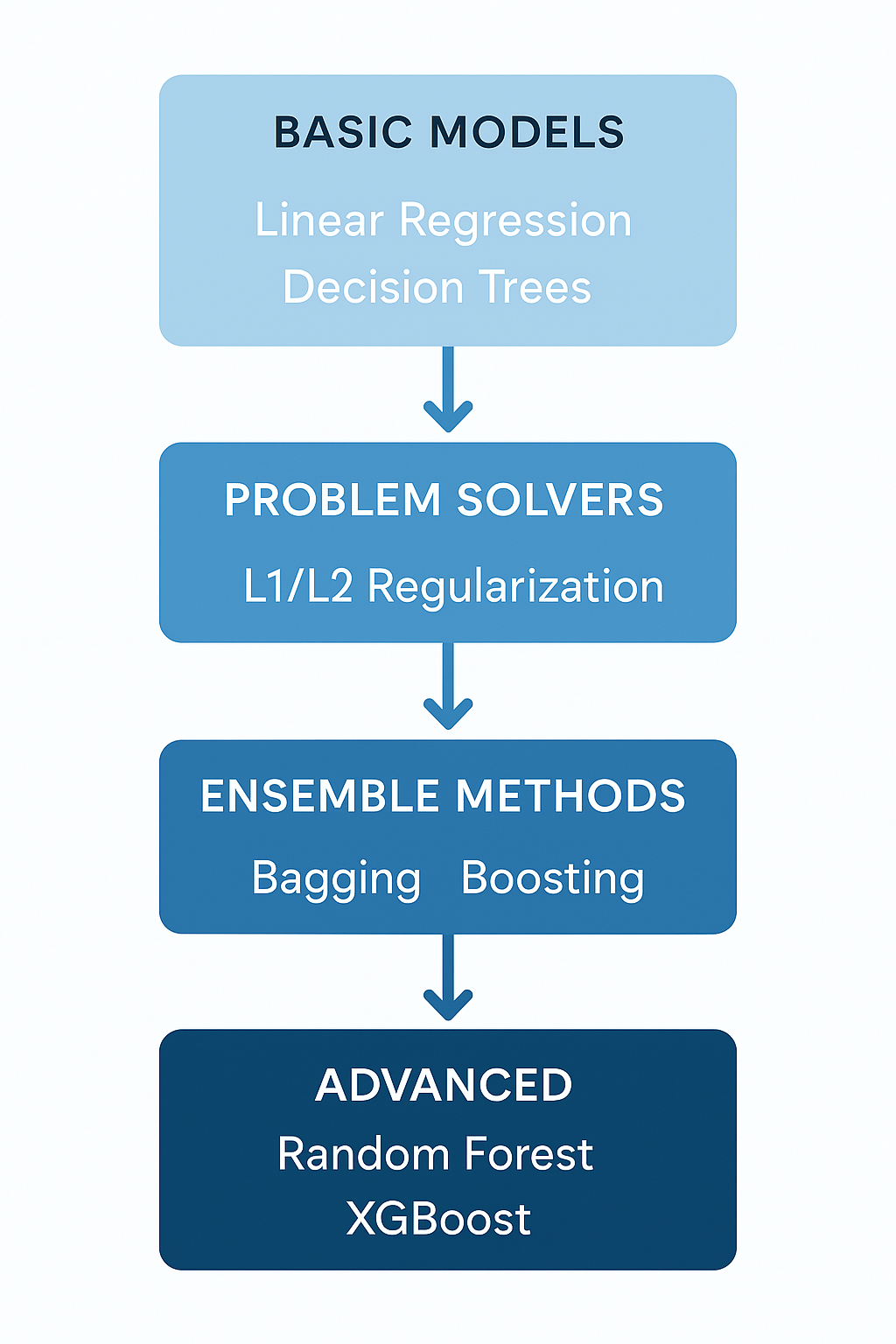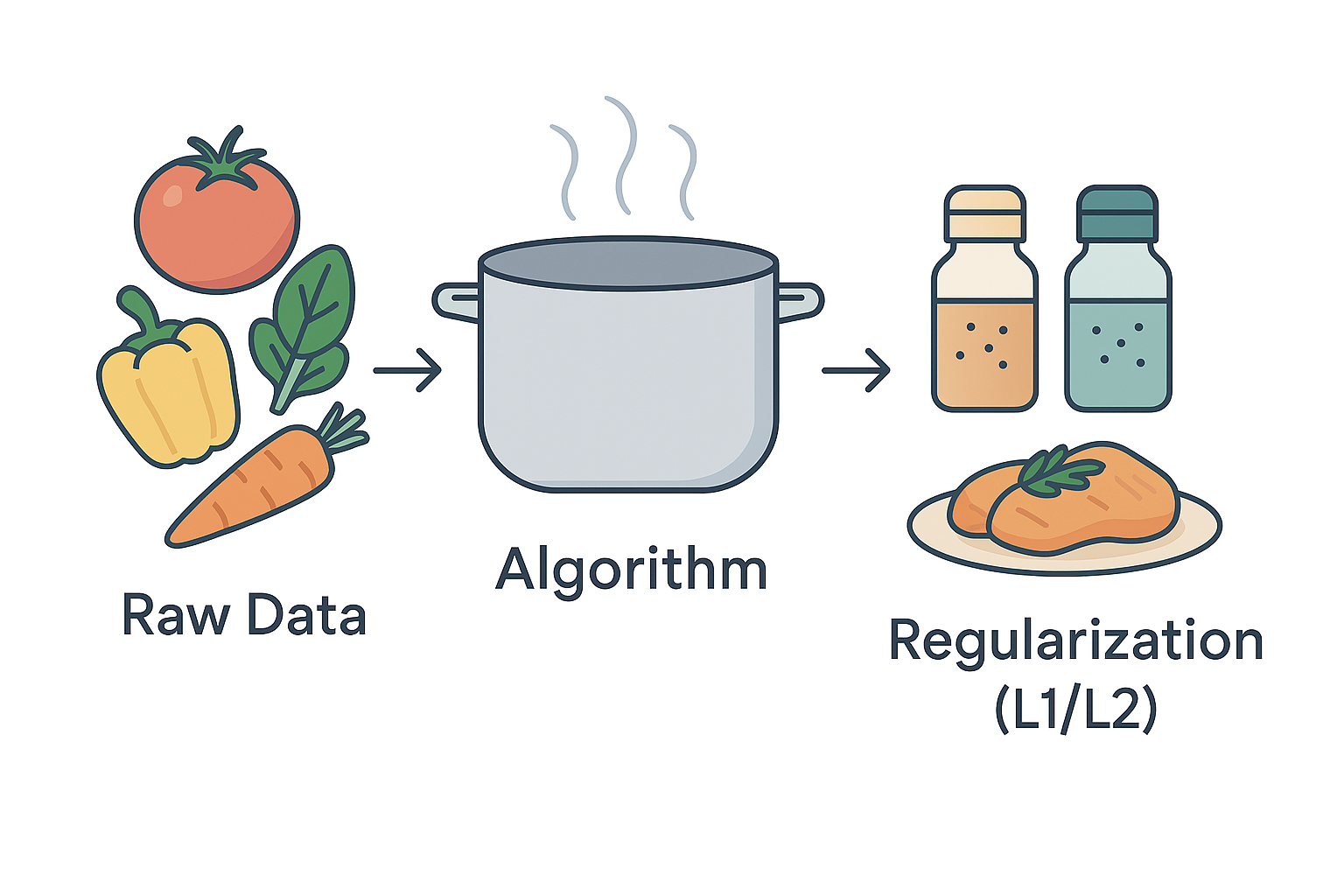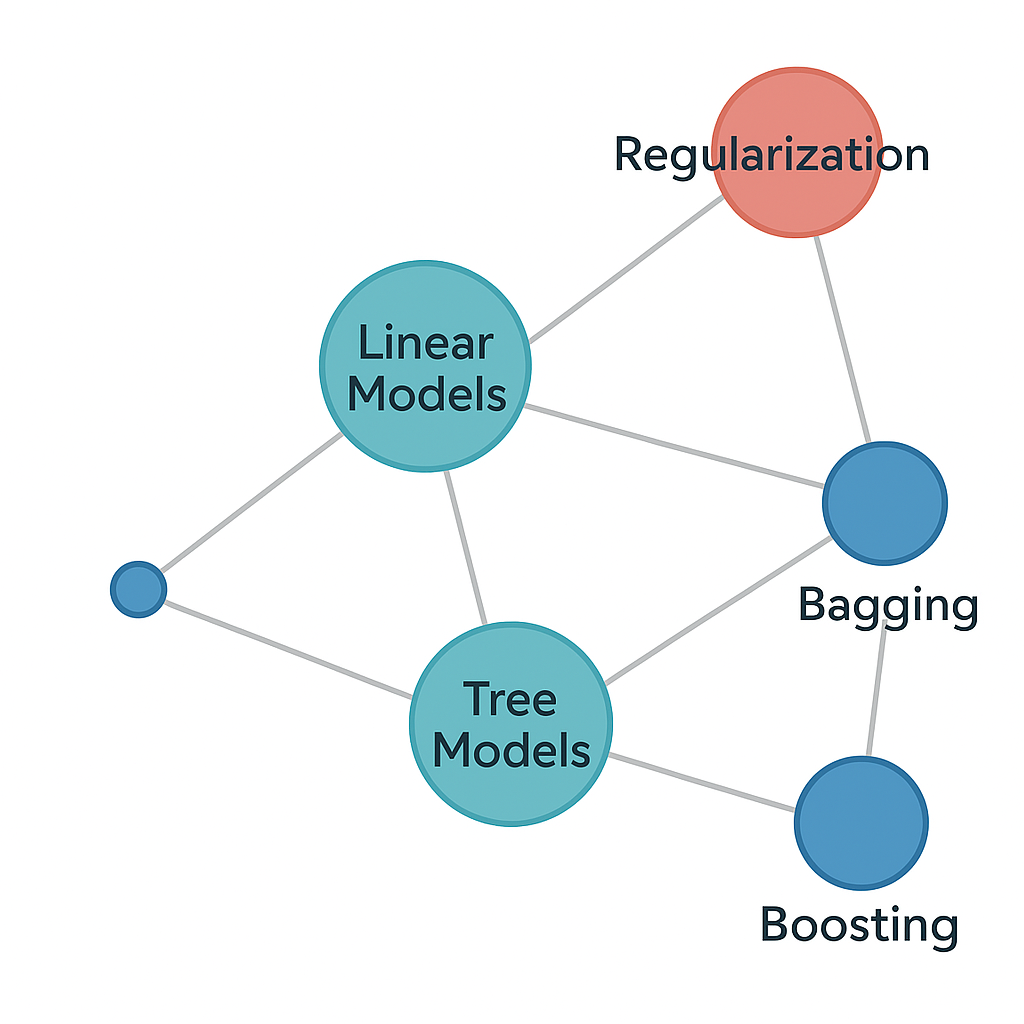Chapter 1: The ML Landscape Map
Understanding the big picture: How machine learning techniques connect and build upon each other
The Big Picture Problem
When you first learn machine learning, it feels like being dropped into a foreign city without a map. You encounter dozens of algorithms, techniques, and concepts that seem completely unrelated:
The Confusion You're Experiencing
- Linear Regression - Simple line fitting
- L1/L2 Regularization - Mysterious penalty terms
- Decision Trees - Rule-based splitting
- Random Forest - Voting trees?
- XGBoost - The "champion" algorithm
- Bagging vs Boosting - What's the difference?
How do these all fit together? When do you use what?
Our Solution: The ML Roadmap
This tutorial provides the roadmap you've been missing. Instead of learning algorithms in isolation, you'll understand their relationships, when each technique was invented to solve specific problems, and how they build upon each other.
Quick Self-Assessment
Rate your current understanding (1-5 scale):
The ML Technique Hierarchy
Machine learning techniques follow a natural progression. Each level solves problems created by the previous level:

Click the image to explore each level interactively
Level 1: Basic Models
Linear Regression & Decision Trees
Simple, interpretable algorithms that form the foundation of ML.
Problem: They overfit to training data
Level 2: Problem Solvers
L1/L2 Regularization
Techniques that prevent overfitting by adding penalty terms.
Problem: Single models still have limitations
Level 3: Ensemble Methods
Bagging & Boosting
Combine multiple models to improve performance.
Evolution: Random Forest, Gradient Boosting
Level 4: Advanced Implementations
XGBoost & Modern Variants
Optimized implementations with superior performance.
Result: State-of-the-art predictive models
The Cooking Metaphor
Think of machine learning like cooking. This analogy will help you understand the relationships between different techniques:

The ML Cooking Process
Features, labels, observations - the foundation of everything
Linear regression, decision trees - how you process the data
L1/L2 penalties - fine-tune the flavor and prevent "oversalting"
Multiple chefs (models) collaborate for the perfect dish
Build Your ML Recipe
Select ingredients to see what ML techniques you'll need:
Click a step to learn more
The Connection Web
ML techniques don't exist in isolation. They form a web of relationships where each technique builds on others:

Explore the Connections
Click on any technique to see its relationships:
Linear Models
Connects to: L1/L2 Regularization, Ensemble Methods
Relationship: Forms the base learner in many ensemble methods. Regularization was invented to solve linear model overfitting.
Evolution: Linear → Regularized Linear → Linear in Ensembles
Decision Trees
Connects to: Random Forest, Gradient Boosting, XGBoost
Relationship: The building block of most ensemble methods. Trees are combined through bagging or boosting.
Evolution: Single Tree → Forest of Trees → Optimized Tree Ensembles
Regularization
Connects to: All models (Linear, Trees, Ensembles)
Relationship: Universal technique to prevent overfitting. Applied differently across algorithm families.
Forms: L1/L2 for Linear, Pruning for Trees, Early Stopping for Boosting
Bagging
Connects to: Decision Trees (Random Forest), Any base algorithm
Relationship: Trains multiple models on different data samples, then averages predictions.
Key Innovation: Reduces variance through model averaging
Boosting
Connects to: Weak learners (usually Trees), XGBoost evolution
Relationship: Sequential training where each model fixes previous model errors.
Key Innovation: Reduces bias through iterative error correction
Random Forest
Connects to: Decision Trees + Bagging + Feature Randomness
Relationship: Combines tree power with bagging stability and feature selection.
Innovation: Added random feature selection to reduce tree correlation
XGBoost
Connects to: Gradient Boosting + Optimization + Regularization
Relationship: Optimized implementation of boosting with advanced regularization.
Innovation: Mathematical optimization + Systems engineering + Built-in regularization
Chapter 1 Quiz
Test your understanding of ML technique relationships: